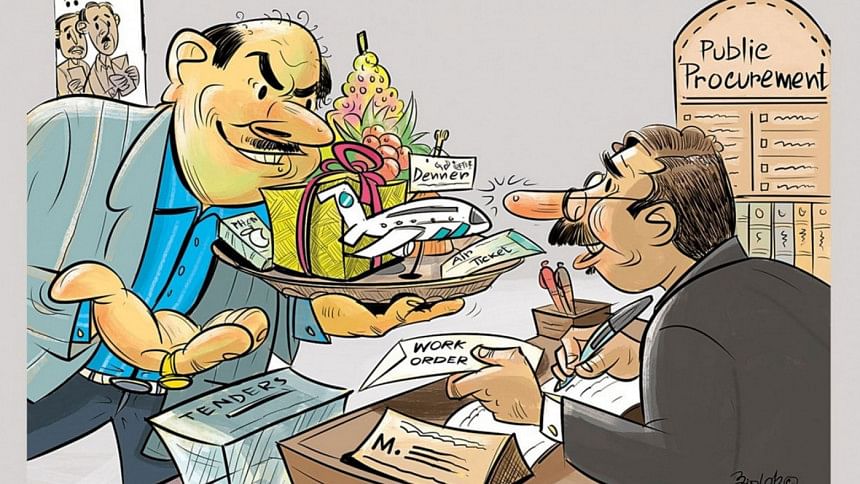Expectations for the health sector in a pandemic budget

Public health has never been a priority sector for the government of Bangladesh when it comes to budget allocation. But the need for a higher expenditure for the health sector in Bangladesh has been felt for long. Reforms in the sector for better healthcare has also been an urgent demand. Unfortunately, the sector has so far received little attention in terms of resource allocation and reforms, irrespective of political regimes. For the past 12 years, the budget share for the health sector has been less than 1 percent of GDP. Sadly, despite the ongoing health crisis created due to the Covid-19 pandemic, the health sector is yet to receive increased attention from policymakers.
The outgoing fiscal year (FY2021) saw only a 14 percent increase in total allocation for the health sector compared to FY2020. More precisely, allocation for health as a share of GDP increased only marginally from 0.84 percent in FY2020 to 0.92 percent in FY2021. As a share of the total budget, allocation for health increased from 4.72 percent in FY2020 to 5.15 percent in FY2021. In the past we have seen higher allocation than now. For example, in FY2010 the health budget was 6.18 percent of the total budget.
The recently approved Annual Development Programme (ADP) for FY2022 indicates that the allocation for the health sector is 7.68 percent of total ADP or Tk 17,306 crores. Though this has been raised compared to FY2020, the increase in health sector ADP is one of the lowest.
As the budget for FY2022 is imminent, there is no scope to expect any changes in what has already been prepared by the Ministry of Finance (MoF). But the MoF may revisit some of its numbers during the next one month (June) before it is approved in the National Parliament at the end of June. Besides, some of the issues related to the health sector cannot be completed within a year and require medium term interventions. Therefore, policymakers need to take those into consideration in the coming years to improve the health sector of the country. A few observations and recommendations are highlighted here:
First, the most important health measure at this moment is to vaccinate all eligible people across the country. The health ministry should procure adequate vaccines from available sources and vaccinate people free of cost. The government has planned to create a Vaccine Support Fund in the upcoming budget with a loan of about USD 2 billion from donors. Hopefully, this will be used for the vaccination of a large section of the people.
Second, more resources are required for enhancing the treatment capacity of the Covid-affected people through more hospital beds, oxygen, intensive care unit beds, testing facilities and free mask distribution. More resources are needed to recruit more doctors, nurses, midwives, health professionals and volunteers.
Third, the composition of the health budget should be changed. In FY2021, of the total health budget, allocation for development budget increased by only 1.90 percent while non-development budget allocation increased by 24.37 percent compared to that of FY2020. Of course, this is a national trend. In the overall budget the share of development budget allocation also decreased from 48 percent in FY2020 to 43 percent in FY2021. But the decline in the health budget is more disappointing at a time when the country needs more allocation. The increase in total budget allocation for health in FY2021 followed a business-as-usual trend. The need for additional resources during a health crisis of this scale was ignored.
Fourth, budget implementation capacity of the Ministry of Health and Family Welfare (MHFW) should be improved. The Finance Ministry allocates resources against the benchmark of expenditures by each ministry. Though the allocation for the health sector increased only marginally in FY2021 the MHFW could not spend the money allocated to them. The MHFW could spend only 21 percent of its allocated budget during the first nine months of FY2021.
As it is, the average total ADP spending as of March 2021 was also very low—only 41.9 percent of total allocations for ADP. The health sector has been one of the poorest performers in terms of ADP expenditures. Among the 57 ministries and divisions, the health ministry is positioned 51st in terms of ADP expenditure. Low performance in the period of a serious health crisis such the as the Covid-19 pandemic indicates how much health services the coronavirus affected people are receiving.
Fifth, the quality of expenditure has to be improved to observe any visible change in healthcare.Budget allocation is only a part of the solution to the perennial problems faced by the health sector in Bangladesh. The efficiency in the expenditures, the distribution of health services, the management of resources, the regulatory mechanism and the governance and accountability of the health sector have taken the centre stage once again in view of the corruption and irregularities of the health ministry. The lack of measures against such deficiencies even during the pandemic is only a reflection of the insensitivity towards public demand.
A large part of the health budget is spent on physical infrastructure development, and salary and allowances of human resources. Misappropriation of resources is common during the procurement for construction of infrastructure. Investigative media reports have revealed how the contracts are offered, how the procurements are done, and how the equipment prices are inflated. In the process, quality is compromised and resources are wasted. If the government is serious about having a transparent health sector, an audit of all health-related procurement during the last five years should be initiated by the Parliamentary Standing Committee on Health or on Public Accounts. This could be an exemplary measure towards establishing the culture of accountability of public resources.
Sixth, the governance of the overall health system is critical for a better health system. There are multiple actors in the health sector. The inadequacy of public health facilities has led to the rise of private healthcare. But quite often those remain out of government surveillance. The government should bring all private and non-government healthcare under the regulatory framework to establish their accountability and ensure the quality. The unregulated private health providers arbitrarily fix health costs. Their quality of their healthcare also varies. Therefore, private healthcare system should be integrated with the public health system. The MHFW should also monitor the quality of pharmaceutical products through strong oversight mechanism.
Seventh, health research and innovation should be supported. Higher resources for research at health institutes and medical colleges and equipping those with high-quality state-of-the-art technologies will help improve the quality of health services in the country.
Eighth, for effective policy formulation, real time and authentic data are needed. The true picture of the health sector is not reflected due to a huge data gap in the health sector. Most health-related data are not updated regularly. More resources are needed for high quality data generation which would help health related research and analysis.
The pandemic has put the spotlight on the health sector. Though these limitations have existed for long, the pandemic has helped us to look at the health issues afresh. Ironically, after more than a year into the pandemic, the health ministry has not shown any improvement in its performance. The need for more public resources through higher budgetary allocation is crucial for the improvement of the health sector. However, experience also tells us that higher budget alone cannot remove the stumbling blocks that are in place. The health sector needs a total overhauling.
For this, higher government expenditure is not enough. It requires strong government commitment.
Dr Fahmida Khatun is the Executive Director at the Centre for Policy Dialogue.
Views in this article are personal.

 For all latest news, follow The Daily Star's Google News channel.
For all latest news, follow The Daily Star's Google News channel. 



Comments